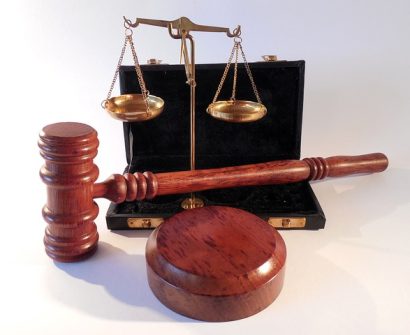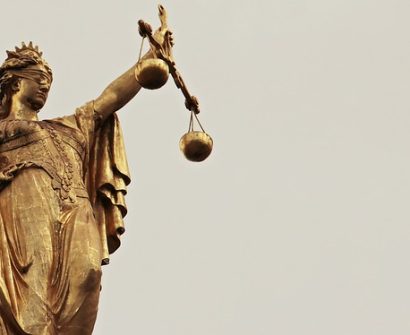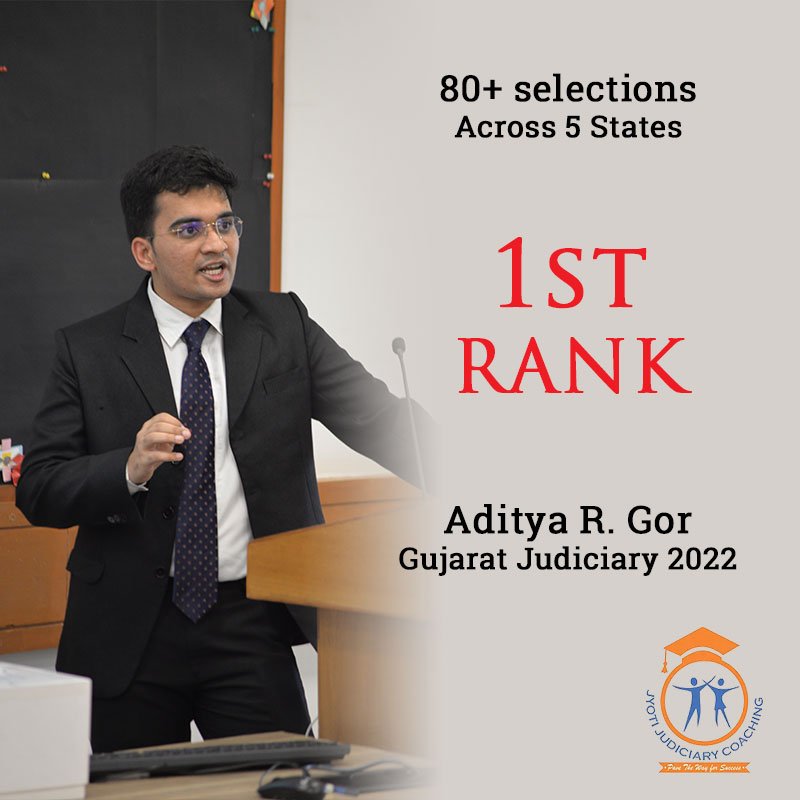
Introduction –
Article 21 – ‘’No person shall be deprived of his life or personal liberty except according to a procedure established by law’’
Article 21 Deal with two Rights
- Right to life,
- Personal liberty
Meaning and concept of Right to life
Everyone has the right to life, liberty and security of the person. The right to life is undenialy the most fundamental of all rights. All other rights add to the quality of life in question and depend on the pre-existence of life for their operation. Since human rights can only be associated with living beings, one can expect one’s right to life in some sense to be primordial, since none of the other rights will have any value or utility without it. If Article 21 had been interpreted in its original meaning, there would have been no fundamental right. This section will examine the right to life as interpreted and enforced by the Supreme Court of India. Article 21, 1950 of the Constitution of India states that, “No person shall be deprived of his life or personal liberty according to the procedure established by law.” In Article 21 of the Constitution, ‘life’ is not merely a physical act of breathing. It cannot continue the existence of mere creature through life. It has a very broad meaning which includes the right to live with human dignity, the right to livelihood, the right to health, the right air to pollution, etc.
The right to life is fundamental to our existence, without which we cannot live as a human being and it includes all the aspects of life that make a man’s life meaningful, fulfilling and worth living. It is the only article in the constitution that has received the widest possible interpretation. Under the umbrella of Article 21, many rights have been sheltered, developed and nurtured. Thus, bare necessities, minimum and basic requirements which are necessary and unavoidable for a person, are the basic concept of right to life.[1]
Right to live with human dignity –
The right to live includes the right to live with human dignity and all rights that go with it, that is, the bare necessities of life such as adequate nutrition, clothing and shelter on the head and facilities for reading, writing and expressing variations. Independently, it should include the right to mingle and mingle with fellow humans and to carry out the basic necessities of life as well as to carry out tasks and activities.[2]
Right against sexual harassment at work place –
The Supreme Court has declared in a very renowned case sexual harassment of its working woman as a violation of the rights of gender equality and rights of life and liberty which is a clear violation of Articles 14, 15 and 21 of the Constitution. In the ground verdict, the Supreme Court gave the following guidelines in the absence of enacted legislation for effective enforcement of basic human rights of gender equality and to guarantee against sexual harassment:
All employers or individuals in charge of the workplace must take appropriate steps to prevent sexual harassment in the public or private sector. Without prejudice to the generality of this obligation, they should take the following steps:
- The prohibition of sexual harassment at the workplace should be notified, published, and circulated in appropriate ways as stated above.
- The regulations of government and public sector bodies relating to conduct and discipline should include laws prohibiting sexual harassment and provide appropriate punishment against the offender in such rules.
- As stated by private employers, the aforesaid restrictions should be included in the Standing Orders under the Industrial Employment Act, 1946.
- Appropriate working conditions should be provided in relation to work, leisure, health, and hygiene to ensure that there is no hostile environment towards women at workplaces and that any employee woman should not have reasonable grounds to believe That he is deprived of his employment.
Where such conduct occurs for specific offenses under I.P.C, or any other law, the employer shall initiate appropriate action in accordance with the law by making a complaint with the appropriate authority. Victims of sexual assault should have the option to seek the offender or their own relocation.[3]
Right against Rape –
Rape is not only a crime against a woman’s person, it is a crime against the whole society. It destroys a woman’s entire psyche and pushes her into deep emotional crises. It is only her sheer will power that she rehabilitates herself in society, who, upon finding out the rape, sees her in derision and contempt. Therefore, rape is the most disgusting crime. It is a crime against basic human rights and is a gross violation of the fundamental rights of the victims, namely, the right to life with human dignity enshrined in Art 21
Right to Shelter –
Shelter for a human being, therefore, is not a protection of his life and organ. However this is where he has opportunities to grow physically, mentally, intellectually and spiritually. Hence the right to shelter, adequate living space, safe and civilized structure, clean and civilized surroundings, adequate lighting, pure air and water, electricity, sanitation and other civic amenities such as roads etc. are included so that it has easy access to daily aviation. Therefore, the right to asylum means not just a right to roof over a person’s head, but the right to all the infrastructure necessary to live and develop them as a human being.[4]
Right to livelihood –
Right to life includes right to livelihood
Personal Liberty –
The term ‘personal liberty’ was interpreted by the Supreme Court in the case of Kharak Singh, which U.K. P. The constitutional validity of the Police Regulations was generated by a challenge that provided for surveillance through domicile visits and covert picketing. Surprisingly, Munna, both the majority and minority on the bench, relied on the meaning given to the word “personal liberty” by an American judgment in Illinois (per Field, J.), which meant the word ‘life’ as something else. Mere existence of beings. The prohibition against its absence extended to all the boundaries and faculties by which life was enjoyed. Personal liberty is a personal right not to be subjected to imprisonment, arrest or other physical force in any manner that does not accept legal justification.[5]
There are so many rights which are covered under Personal Liberty like
Right to travel –
Personal liberty is a personal right not to be subjected to imprisonment, arrest, or other physical force in any manner that does not accept legal justification.
Right to education –
Right to education is a fundamental right under Article 21which cannot denied by imposing higher fees.
There are many Right which are covered under Article 21 like;
Right to Die, Right to free legal aid, right to go abroad, Right against solitary confinement, Right against custodial death, Right against public hanging, Right against delayed execution etc.
Right to reproduction under Article 21–
- What is right to reproduction–
Reproductive rights are about the legal right to contraception, abortion, fertility treatment, reproductive health and access to information about one’s reproductive body. Reproductive rights protect people’s freedom to make decisions about their body’s abilities (not reproduce). Departing from a feminist understanding of the reproductive body as the most intimate venue for political conflict, reproductive geography has emerged as a relatively new field within human geography. Breeding used to be a traditional subject of quantitative population geography. More recent geographical work on reproduction, however, has been inspired by feminist, Black, postcolonial, and critical theories to address the disparate geography of access to reproductive health and places of justice. Research in the field of reproductive geography increasingly employs an intersectional perspective, examining how reproductive rights questions are affected along with environmental, racial, gender, and gender justice. Although research on intersectional geopolitics looks at how reproductive freedom and autonomy are interwoven into broader geopolitical, geo-economic, and biopolitical power relations, reproductive geography studies the locations, dynamics, and practices of reproduction, pregnancy, and birth.[6]
- Reproductive rights for Women in India
Although India was one of the first countries in the world to develop a legal and policy framework guaranteeing access to abortion and contraception, women and girls face significant barriers to fully enjoy their reproductive rights, including Poor quality health services and denial of women and girls are included, decision making authority.
Historically, reproductive health laws and policies in India have failed to adopt an approach based on women’s rights, rather than deliberately or explicitly discriminating women’s reproductive autonomy, such as discriminatory provisions such as demographic targets, such as population control. That be reduced through seasonal consent requirements. Access to reproductive health services. Marriage of girls under the age of 18 and despite policies and schemes guaranteeing maternal health of women, despite a national law, accounts for 20% of the number of child marriages in India and all maternal deaths globally.
Although India’s national population policy guarantees women voluntary access to the full range of contraceptive methods, in practice state governments continue to introduce schemes promoting female sterilization, including, through targets, coercion, risk Includes substandard sterilization procedures and denial of access to non-permanent. Methods.
Also, courts in India have an important role in ensuring women’s reproductive rights as a guarantee of their constitutional and human rights.
- Reproduction roots under UDHR –
Reproductive rights go far beyond abortion. The global fight for reproductive rights is a fight against maternal mortality, forced and forced sterilization, and gender-based discrimination and oppression. It is a struggle to give women the power to decide for themselves what, when, and with whom they have children, and to have access to sound, medically accurate information about family planning and sexually transmitted infections. It is a battle for universal access to all forms of contraception for both women and men. And it is an attempt to protect women, men and children from the devastating effects of HIV / AIDS.
In short, the reproductive rights movement seeks to promote its agency to people around the world and control individual sexual and reproductive health decisions. Reproductive rights advocates are growing rapidly, using human rights standards and strategies to expand the reproductive rights fight for women and girls. Sexual and reproductive rights are integral to basic human rights. Yet they are generally ignored by governments and often receive brief reductions from some members of the wider human rights community.
This cold shoulder towards reproductive rights is a cause for concern. Reproductive rights are basically rooted in the principles expressed in the Universal Declaration, including life, health, physical integrity, non-discrimination, equality and rights in marriage, and freedom from all forms of torture and other cruel, inhuman and degrading rights.[7]
- Court Judgement over Reproduction Right –
Puttaswamy’s decision recognized the constitutional right of women to make reproductive choices, particularly as a part of personal freedom under Article 21 of the Indian Constitution. The bench also reiterated the position adopted by a three-judge bench in Suchita Srivastava v. Chandigarh Administration, stating that reproductive rights include the right of a woman to conceive, give birth and have children later in her full term. And these rights are part of women’s right to privacy, dignity and physical honesty.
Reproductive rights are essential for the attainment of all human rights. They encompass a spectrum of civil, political, economic, and social rights, ranging from the right to health and life to equality and non-discrimination, privacy, right to information and free from torture or ominous treatment. States’ obligations to guarantee these rights require that women and girls not only have access to comprehensive reproductive health information and services, but also that they experience positive reproductive health outcomes such as unsafe abortion and maternal Mortality and the opportunity to make fully informed decisions. – Free from violence, discrimination and coercion – about their sexuality and reproduction.
Breach of reproductive rights harms women because of their ability to get pregnant and legal protection of these rights because human rights are important to enable gender rights and women’s equality. The Constitution of India considers many of these rights as fundamental rights that the government has an obligation to include the right to equality and non-discrimination (Articles 14 and 15) and the right to life (Article 21) Jurisprudence covers health, dignity, freedom from atrocities and ill treatment, and the right to privacy. India is also a signatory to several international conventions, such as the Convention on the Elimination of All Forms of Discrimination against Women (CEDAW); International Agreement on Civil and Political Rights (ICCPR); International Agreement on Economic, Social and Cultural Rights (ICESCR); And the Convention on the Rights of the Child (CRC), which recognizes all reproductive rights. Article 51 (c) of the Indian constitution and the judiciary have established that the government has a constitutional obligation to respect international law and behavioral obligations.
The Government of India also performs a constitutional obligation to ensure legal remedies for fundamental rights and human rights violations. Article 39 (a) requires the government to promote equal access to justice and equal legal aid to ensure that “no citizen is denied opportunities for justice due to economic or other inefficiencies.”[8]
Conclusion-
Women have the right to:
- Decide the number, vacancy and time of your children independently and responsibly
- Decide on the number and means of vacancy and time of their children.
- Maintain the highest standard of sexual and reproductive health (You have the right to be physically and mentally healthy with access to medical, mental and social facilities and services and support the exercise of your sexual and reproductive rights.)
- Make decisions about your reproduction free of discrimination, coercion and violence.
- Its her decision whether she have 0, 1 or 7 children.
- Its her decision whether she go through female vasectomy right now or when you are 50 years old.










